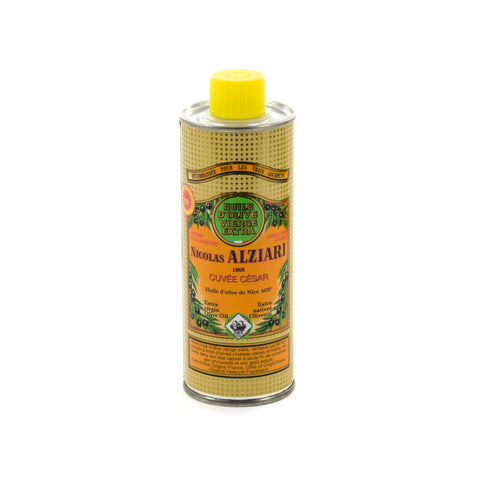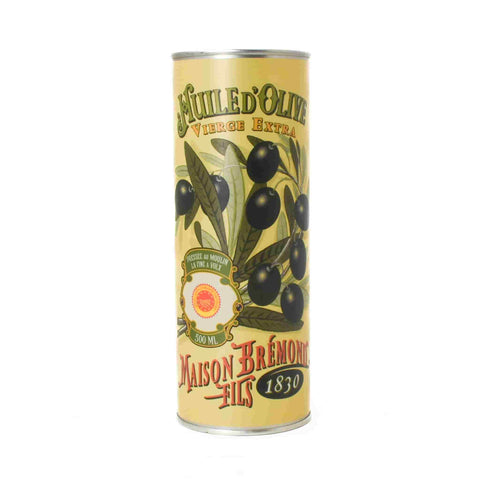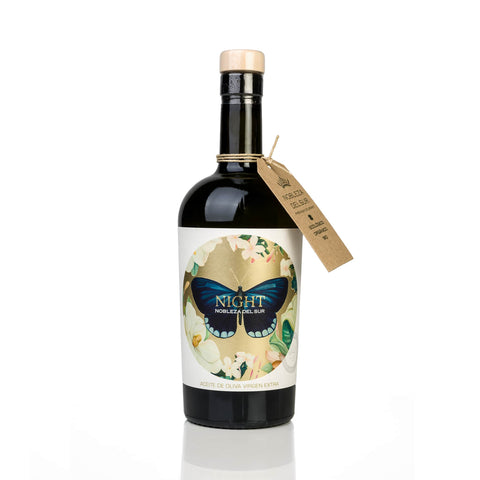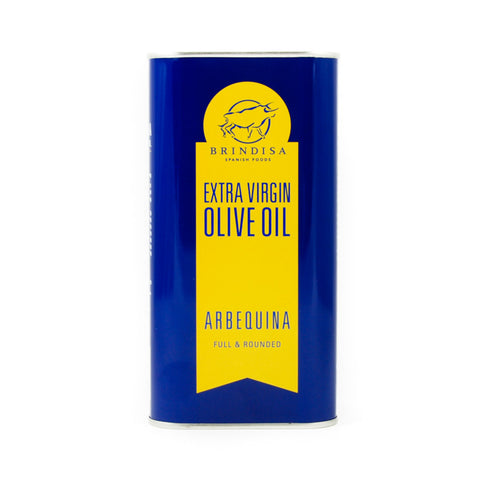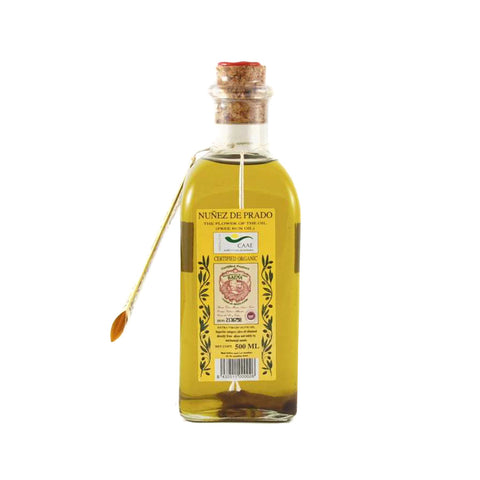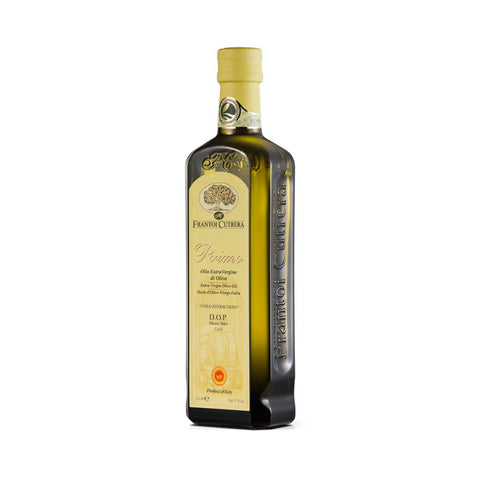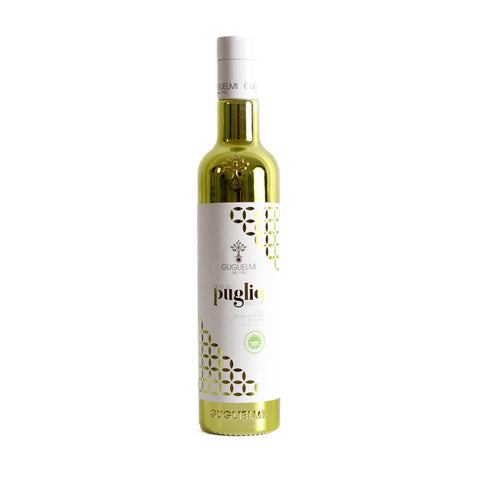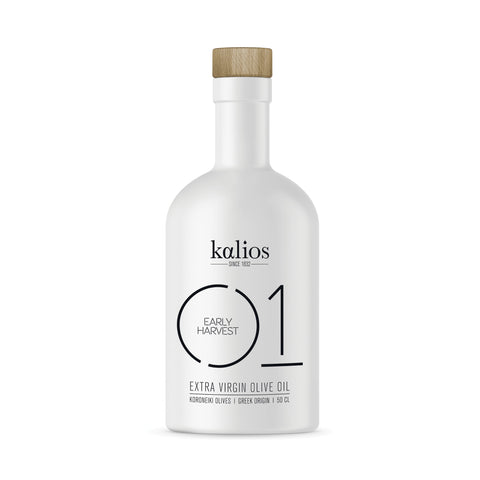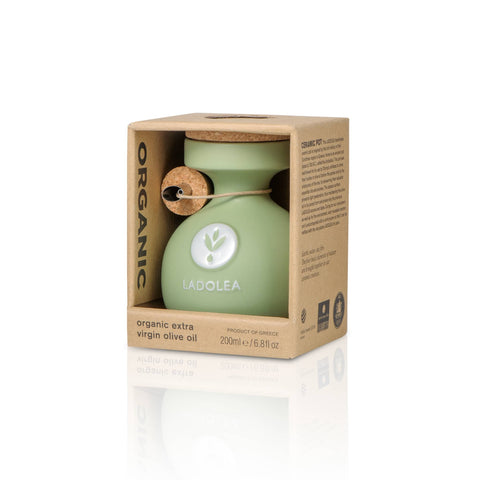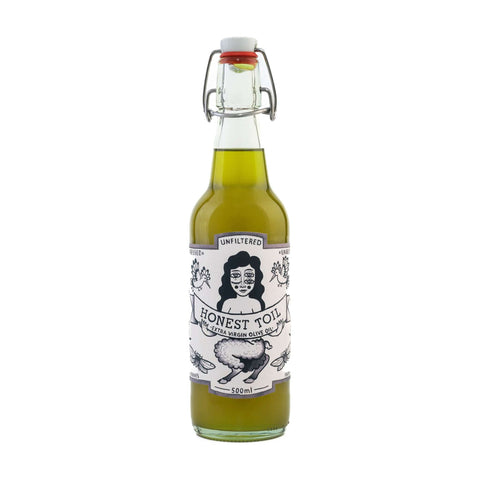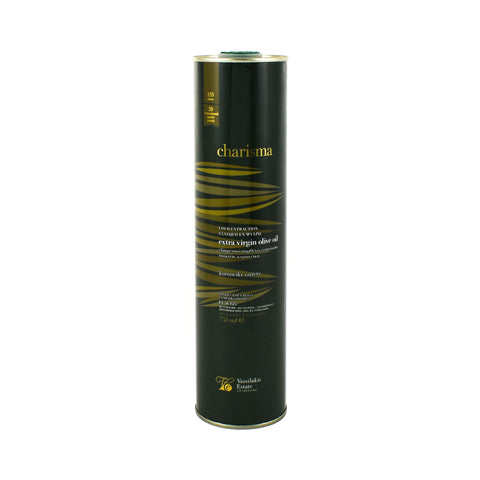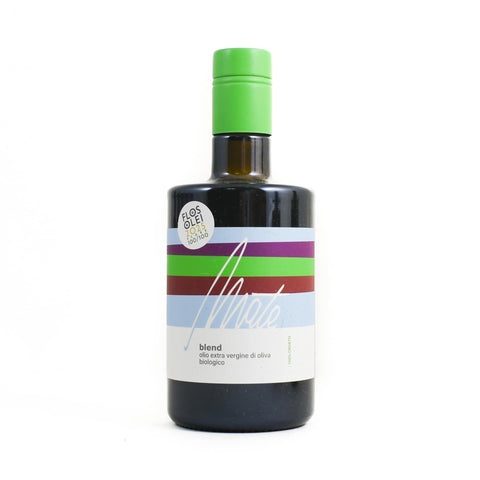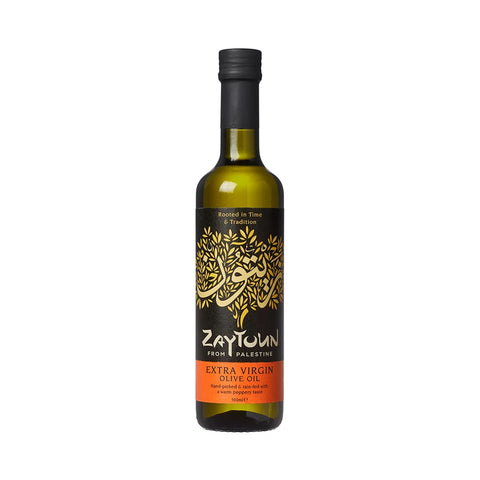The Best Olive Oil in the UK - Expert Buyer's Guide
by Nicola Lando

Discover what olive oil is, how each variety differs in taste, and the best varieties to buy with our guide.
Olive oil is the juice from pressed olives. Learn about how it's made, the difference between olive oil and extra virgin olive oil, and learn about best oils in the world in our extensive guide.
When you're asking about the 'best olive oil' it has to be 'extra virgin olive oil'. Therefore that's what our guide is about. If we mention olive oil, please know that we're talking about extra virgin olive oil (EVOO for short).
If you're already an olive oil expert, jump straight to the 10 best olive oils to start with.
In this article:
- How is olive oil made?
- How is extra virgin olive oil different?
- The different flavour profiles of olive oil
- How are the best extra virgin olive oils rated?
- How does olive oil vary by region?
- What to look for when buying olive oil (& watch the VIDEO tutorial!)
- 10 best olive oils to start with
- Best French olive oil
- Best Spanish olive oil
- Best Italian olive oil
- Best Greek olive oil
- Best olive oil from elsewhere
- Glossary
Why trust us?
- Nicola, Author and Sous Chef Founder, is a certified Olive Oil Sommelier - a qualification for Extra Virgin Olive Oil (EVOO) professionals - whether producers, growers or awards judges. She had to pass a lengthy written exam as well as several blind tastings. This means she's able to judge oil quality and variety, as well as any defects, in minutes.
- Nicola tastes 100s of extra virgin olive oils every year, travelling to meet producers around the world. Her mission is to taste competition prize winners, as well as supermarket blends so she has a true understanding of what's out there - and what provides the best value.
- Our team taste and approve every single olive oil we sell. We reject any that doesn't make the grade.
Throughout the article, Nicola shares her insider pro tips, so you can become an expert on EVOO too!
How is olive oil made?
Olive oil is made by pressing olives into a liquid.
Nicola's insider pro tip: The best quality EVOOs are made from olives the day they are harvested, which prevents deterioration during storage.
The process of making olive oil typically involves several steps, which are as follows:
- Harvesting: The olives are harvested from the trees when they are ripe, which is typically in autumn/winter.
- Crushing: The olives are crushed into a paste using a stone mill, hammer mill, or modern machines that use metal toothed blades. This process breaks down the olives into a thick paste, including the skins, flesh, and pits.
- Malaxation: The olive paste is then stirred or mixed to help separate the oil from the rest of the paste. This process is called malaxation and typically lasts between 20 and 40 minutes.
- Separation: The oil is separated from the rest of the paste by a process called pressing. The paste is placed into a press that applies pressure to the paste to extract the oil. The oil is then separated from the remaining liquid and solids.
- Filtering: Most oils are then filtered to remove any remaining solids, such as bits of pulp or pit fragments - a few oils retain the 'cloudiness' and are called 'unfiltered oils'.
- Storage: The oil is stored in a cool, dark place to prevent oxidation and maintain its flavour and nutritional qualities.
Nicola's insider pro tip: Unfiltered extra virgin olive oils are divisive amongst industry professionals. If you speak to some of the top producers in the world, they'll say they to never leave an EVOO unfiltered as it keeps things there that just shouldn't be there in a high quality EVOO. The additional pieces of olive flesh can shorten the shelf life as it will ferment over time. However, personally, I love some of the unfiltered olive oils I've tried. Made by a good and thoughtful producer, you can find a more olivey flavour than other oils of a similar quality.
How is extra virgin olive oil different?
Extra virgin olive oil is made using the a similar process as regular culinary olive oil, with the exception that it is made exclusively from the first pressing of the olives. From high quality producers, and high quality olive groves, "extra virgin" indicates a stronger, more complex flavour profile.
There are also important tests - both tasting by expert tasters; as well as scientific tests (including testing the oils 'acidity') to confirm if the olive oil can be labelled 'extra virgin olive oil':
- Firstly it must have no discernible flavour or aroma defects when tasted by an experienced panel of olive oil tasters.
- And secondly the chemical test: it must have an acidity of less than or equal to 0.8%. This helps to indicate how much the compounds in the oil has oxidised, and therefore gives a helpful direction on potential shelf life as well as health benefits.
However, there are many olive oils labelled "extra virgin" which closely reflects the variety of the olives and the climate they were grown in.
Nicola's insider tip: "Although everyone says EVOO is cold pressed - it actually isn't necessarily all that cold! An award-winning grower shared that when olives are harvested during Autum or Winter, the temperature can be less than 15 degrees. The oil would be solid inside the olive! Nothing would run out. Producers do sometimes need to warm the olives before pressing."
Hand-harvesting vs machinery
Large olive oil producers harvest olives at night using vacuum machines, which can suck in and kill millions of sleeping and dazed songbirds each year.
At Sous Chef, we only work with producers who use more artisanal harvesting methods - shaking the trees for the olives to fall. No songbirds aren't killed during the harvest... This also to make a higher quality oil, keeping the surface of the olives free from bruising.
To learn more about why we only stock hand-harvested olive oil, read out article: saving the songbirds.
The different flavour profiles of olive oil
How does olive oil vary in taste?
Quality olive oil should have a harmonious balance of fruitiness, bitterness, and pungency.
All good olive oil must have a "fruity" taste - this fruitiness refers to a fresh olivey flavour. To be clear, it's not referring to fruit such as bananas, strawberries, or apples -- although sometimes these flavours are found in EVOO.
The taste of extra virgin olive oil differs depending on the land the olives are grown on (terroir), the olive varieties, and how fresh the oil is.
Plus very importantly when the olives were picked and how they are pressed:
- A late harvest olive or 'ripe' olive oil will be sweeter and less bitter.
- An early harvest olive will be more intense and 'green' tasting.
- Oils made with pitted olives are less bitter than other varieties – this is because the tannins and polyphenols that contribute to bitterness in oil are mainly found in the stones.
Nicola's pro insider tip: It's tempting to think greener oils are better as they look so beautiful. However colour can range from golden yellow to green based on the olive type and region, so it's not an indicator of quality. Prioritise taste and aroma over colour.
Freshness
To ensure you’re getting an oil that has retained its flavour and health benefits, it is best to buy oil with a recent harvest date: the olive oil's freshness has an impact.
As an oil gets older the flavour profile can change. This isn't necessarily a bad thing... there could just be a slight reduction in tannins or astringency - the kick at the back of your throat may become more gentle.
Look out for new season extra virgin olive oil each year – this is made with the first pressing of the year’s first harvest of olives, and offers up some of the most excitingly complex, nuanced and ‘olive-y’ flavoured oil you can buy.
Nicola's pro insider tip: Some olive varieties can lose their flavour complexity soon after pressing. These tend to be used only in artisanal oils sold very local to the olive mill, as the shelf life for these oils is very short. Almost all the oils you buy in the UK will keep a similar taste profile for 1 to 2 years, when stored correctly.
Watch out for rancidity
Always look out for an oil turning 'rancid'. Not only does a rancid oil taste unpleasant, it also loses its health benefits, and can be bad for you:
- When oils (nut oils or olive oils) are exposed to heat or oxygen they can start to deteriorate.
- This can leave a very unpleasant flavour, and the oil should be discarded. It's an unpleasant sour aftertaste around your mouth. When you've tasted that once you'll easily spot it again!
- You might notice this in peanut butter that's sat by your stove for too long, some supermarket sesame oils, or nuts and seeds that are close to or past their best before date. Roasted or toasted nuts and nut oils go rancid more quickly.
How are the best extra virgin olive oils rated?
Extra virgin olive oils (EVOO) are rated in professional blind tastings as Ordinary, Good, Very Good or Extraordinary EVOO.
This is what tasters look for:
- Ordinary EVOO - there are no obvious taste defects. But the oil doesn't do much in your mouth. It’s ok, because it’s extra virgin, but it just doesn’t taste great. It's like most supermarket extra virgin olive oils, there's just no complexity.
- Good EVOO - everything is fine, and the flavours are balanced. It’s not complex but it tastes well made.
- Very Good EVOO- these oils are well balanced, will have a high level of fruitiness, and complex flavours. There will be a level of bitterness and pungency that’s interesting.
- EXTAORDINARY EVOO - you say wow when you taste it. This isn't something that can be analysed! Like a flavour party in your mouth, and usually a very long finish that keeps you happy and excited minutes after swallowing the oil.
The best olive oils we mention below are all either very good, or extraordinary olive oils. We have included the very good extra virgin olive oils, as you may not want to spend the money on an extraordinary olive oil every single day.
How does olive oil vary by region?
The flavour and colour of olive oils differ by regions and countries. This is due to the variety of olives used, the climate and even the soil conditions.
You'll often find that the olive oils in a region match the taste of the food. For example, Liguria, northern Italy, where fish is a big part of the diet, the olive oils are much more delicate. In Tuscany, where meat is a big part of the diet, the oils are far more punchy and intense.
There is so much regional variety that it's hard to say what each country's oils are like. However, to generalise:
- Greece's most popular koreneki olive is almost nutty in its sweetness - when I taste a mellow nutty or creamy olive oil, it's often greek. However, other olive olive oils from Green can be more intense and bitter.
- Southern France, or Provence oils, are typically gentler. And sometimes you can find 'noir' olive oils, where the olives are pressed late in the season, and nearly black. These will be the mildest, most 'olive-y' olives of them all.
- Southern Italy or Puglia has some of the oils highest in polyphenols, with an intense bitterness and astringency.
- Spain varies hugely. As the world's largest olive oil producer it's almost impossible to generalise. Arbequina olives have little to no bitterness and are mild and sweet. Yet Picual olive oil is intense, with pronounced grassiness and pepper kick.
Nicola's insider pro tip: Sometimes I meet people who tell me a specific country has the best olive oil. Really that's personal taste. I'm adamant that taste is very much about the specific producer - how they grow, pick, process, blend and store the olives and olive oil. In our guide you'll find phenomenal olive oils from many different countries.
What to look for when buying olive oil
When buying olive oil, there are several factors to consider to ensure that you're getting a high-quality product. Here are some things to look for:
- Extra virgin: Look for extra virgin olive oil, which is the highest quality and purest form of olive oil. All of the olive oils we stock are extra virgin olive oils.
- Region: Look for olive oil that is made in a specific region, as this can give you an idea of the flavour profile and quality of the oil. Some regions known for producing high-quality olive oil include Italy, Greece, Spain, and France.
- Olives: If a bottle of olive oil is high-quality it should say what olives it is made from. This will also give you an idea of the flavour profile of the olive oil. If it is made with a mixture of different olives it is likely to be blended to that particular producer's taste. If it is made with pitted olives, it will be less bitter. And if made with young, green or black olives the flavour will be different again.
- Flavour notes: Like fine wine, every bottle of olive oil will have different nuances in taste. All of our descriptions help to describe the flavour profile of olive oils so you can make an informed decision based on your preferences, whether that’s green apple and almonds, to fresh grass and tomato vines.
- Packaging: Look for olive oil that comes in a dark glass bottle, ceramic or tin to protect the oil from light and air. Clear bottles or plastic containers can cause the oil to degrade more quickly. Or if you have a very good extra virgin olive oil in clear glass, just make sure you keep it in the cupboard. Read more on how to store olive oil correctly here.
- Certifications: Indicators of authenticity and quality. Look for labels like "PDO" (Protected Designation of Origin) or "PGI" (Protected Geographical Indication), which indicate a producer is producing to very specific regional quality standards. A good EVOO doesn't have to have this certification, but... if it does and you fall lin love the oil, you're more likely to be able to find something with a similar flavour profile from other producers with the same regional certification.
- Harvest date: Always look for Harvest Date on an olive oil bottle. The oil harvest is from October to February or March - so, for example, the 2024/2025 harvest will be between October 2024 to March 2025. Most varieties of olives sold internationally will continue to taste good for 18-24 months after harvest - assuming they're stored correctly. If there isn't a harvest date, it might be a blend from many different years and harvests - I'd steer clear!
Here at Sous Chef, we only work with trusted producers who make world class olive oils.
While brand recommendations and guidelines provide a starting point, your palate is the ultimate judge, so it’s worth exploring to discover the brands, regions and olive varieties you prefer. Happy tasting!
Nicola's insider pro tip: When you check out our Olive Oil selection online, you'll see every olive oil is labelled with the Harvest Date so you know exactly what you're buying.
10 best olive oils to start with
This is our selection of the top 10 extra virgin olive oils for you to start with:
- Highest polyphenol olive oil Olio Guglielmi Fior D'O Novelo Extra Virgin Olive Oil, 500ml for those thinking about health benefits this has exceptional polyphenols and bitterness (you'll feel it at the back of your throat!)
- The best extra virgin olive oil for cooking Honest Toil Extra Virgin Greek Olive Oil 3 litre Bag in a box Koroneiki olives have a high oleic acid content which makes the oil more stable at higher temperatures. This superb oil also delicious to sip or use in salad dressings.
- The best extra virgin olive oil to keep on your kitchen counter Puglian Extra Virgin Olive Oil in Blue Splatter Ceramic Bottle, 500ml This is a high polyphenol EVOO from Galantino, a superb Puglian producer. Expect pleasing fruit and bitterness, with gorgeous design in this bottle splattered with paint from olive brances
- The prettiest bottle with extraordinary olive oil Nobleza del Sur Early Harvest "Eco Day" Organic Picual Gourmet Extra Virgin Olive Oil, 500ml
- Best ripe olive oil ABBAE de Queiles Organic Arbequina Extra Virgin Olive Oil
- The best olive oil for a really 'olivey' taste Mate Trasparenza Marina Organic Extra Virgin Olive Oil
- Best unfiltered oil Nunez De Prado Organic Extra Virgin Olive Oil, 500ml
- Best extra virgin olive oil in a spray bottle Frantoi Cutrera Primo Organic Extra Virgin Olive Oil Spray, 250ml
- Best extra virgin oil for a flavour party in your mouth Frantoi Cutrera Primo PDO Monti Iblei Extra Virgin Olive Oil Extra virgin olive oil doesn't get much more complex than this multiple award winner
- Best mild extra virgin olive oil Brindisa Arbequina Extra Virgin Olive Oil, 1l Arbequina olives are one of the milder Spanish spanish varieties - picked riper, and with a gentler green almond flavour.
Best French olive oil
We've found the oils that epitomise the flavours of Provencal olive groves. These oils are fruity, interesting and have a slight bitterness that isn't overpowering.
The Alziari DOP ‘Cuvee Cesar’ olive oil is produced in very small quantities and so we reserve the stock before the harvest each year. It's an examplar of AOP Nice, a classic Provence geographic indication.
The extra virgin olive oil is made from Cailletier olives, which gives the oil a grassy aroma and the flavour of almonds and artichokes.
Use it to dress tomato salads or burrata or mozzerella cheese or to finish a refreshing gazpacho soup.
For over 188 years, Maison Bremond has celebrated the finest ingredients of Provence.
They work closely with farmers to protect the Provençal environment, while producing extraordinary oils.
This heritage extra virgin oil has a ripe and fruity flavour with a hint of floral sweetness. It is made from olives that are harvested by hand from the orchards of Monfort in Haute-Provence. Because the oil is harvested when the olives are ripe, it will have a softer and mild flavour.
Best Spanish olive oils
Bravoleum extra virgin olive oil is made from Spanish picual olives. It’s deep green in colour and has an intense fruity flavour with tomato plant aroma.
Drizzle it over pan con tomate or padron peppers for a classic Spanish snack. Also try drizzled over a little dark chocolate, or intese salted dark chocolate mousse.
Bravoluem is recognised as one of the top 5 oil mills in the world, for its fabulous quality. The Picual bottle here has won many awards, including Gold at the 2025 London IOCC - and the 2025 'Global Olive Oil Stars' award. It was ranked Number 2 in the World, by the 'World's Best Olive Oils' - one of the strictest extra virgin olive oil awards available.
Nobleza del Sur ‘Eco Night’ is an organic, early harvest olive oil. It’s made from a blend of Picual and Arbequina olives grown in Andalusia. Is this your first time buying from us?
The olives are picked in early autumn and cold pressed to preserve their flavour. The result is a medium fruity olive oil with a fresh aroma. Its fragrance is reminiscent of the plants that grow amongst the olive trees. Expect notes of freshly cut grass and wild herbs.
Nobleza del Sur’s oil has been awarded ‘Best in Class’ and multiple gold medals, by the world’s most prestigious oil tasting awards - Flos Olei, and the New York International Olive Oil Competition.
This is one of our favourite all-rounders to keep on the kitchen counter. Use this cold pressed olive oil to season classic Spanish dishes such as the traditional breakfast of 'pan con tomate' – toast layered with crushed tomatoes and olive oil.
The extra virgin olive oil is made with the Spanish Arbequina olives, and has a slightly sweet flavour with no bitter after taste. Arbequina olives are known for their riper and almondy taste.
Arbequina olives have a great affinity for tomatoes, burrata, and ham. But also contrast beautifully when drizzled over orange, and sprinkled wth sugar & cinnamon.
From the sun-drenched hills of Andalucia comes Núñez de Prado. It's a blend of three famous Spanish olive varieties: Hojiblanca, Picual and Picudo.
What makes this unfiltered olive oil special is that it's 'the Flower of the Oil', or Flor de Aceite – the absolute highest grade of olive oil from Nunez de Prado, obtained even before the coveted first cold press.
This olive oil is fruity and citrussy, yet somehow spicy at the same time. It has a peppery finish that balances the initial sweetness.
Use as a finishing oil only – drizzle over salads or white fish and seafood, or simply pour into a small dish and devour with fresh bread.
Best Italian olive oils
Our collection of Italian olive oils showcases all that is exciting about the country's production. From the big, bold flavours of Puglian oils from Galantino and Gugliemi - to the fruity bitterness of Tumai Anfosso.
Discover the robust flavour of Primo PDO Monti Iblei olive oil. This cold-pressed, single origin oil is produced by Frantoi Cutrera. This is an extraordinary olive oil, and tasting it is like a party in your mouth!
Primo was the first Sicilian olive oil to obtain PDO status. It has received over 170 awards in just over 20 years. Including the near perfect score of 98/100 by the world olive oil tasting panel, Flos Olei.
Bright green in colour, the oil has a grassy aroma. On the palate, it’s smooth and full-bodied. There are notes of fresh herbs and ripe tomato, followed by a spicy finish. Primo’s intensity is perfect for anyone who enjoys a bold, fruity EVOO.
This extra virgin olive oil in a blue splatter ceramic bottle is from one of Italy’s oldest olive-growing regions, and doubles up as a piece of art for your kitchen. It's a very good intense EVOO with high levels of polyphenols.
The dark blue painted effect will stand out on any kitchen worktop, and looks smart with its red seal and Galantino ribbon. It makes a great gift. The bottle is splashed with paint from olive branches by hand!
Galantino’s oil is renowned for its quality and consistency, and holds protected status (PDO). The family olive mill has been pressing oil since 1926, and is run today by the third generation. All their olives are carefully selected and washed before being crushed on traditional stone mills.
Olio Guglielmi is a Puglian family business that farms 160 hectares of groves - and has done for over 60 years.
The oils are made with olive varieties native to the region. This superb extra virgin olive oil is sweet and spicy on the palate, and has a wonderful lingering complexity - and kick!
It has notes of almond and jasmine. It’s a versatile finishing oil, ideal for drizzling over creamy cheeses, caprese salads and vegetables roasted with garlic and herbs.
The Coratina olives in this bottle from Gugliemi has an unforgettable flavour and aroma.
It is strong, intensely olive-y and a bold bitterness that becomes rounded spice - and stays on the palate long after you've enjoyed the first taste.
This is an oil for connoisseurs, looking for somethign extraordinary.
Monocultivar Taggiasca Anfosso extra virgin olive oil is the taste of Liguria in a bottle. This special olive oil is extracted only from Anfosso’s treasured Taggiasca olive trees.
It has a lightly grassy aroma with notes of green tomato. On the palate, the Monocultivar Taggiasca olive oil is full-bodied and complex, with rich artichoke and almonds flavours
Use Anfosso extra virgin olive oil to finish soups, salads and meat dishes. Or use to make the classic Ligurian pasta sauce – pesto.
Best Greek olive oils
This Greek olive oil is a classic, presed from Koroneiki olives. Kalios offers different koreneki olive oils from different points during the harvest. This early harvest oil is greenest, with notes of cut grass and green apple.
Kalios olive oil is famous for its low acidity (less than 0.3%). Low acidity is an indicator of quality and the care taken when processing the olives. The result is a fresher flavour and an oil rich in antioxidants.
This Greek extra virgin olive oil, made from Koroneiki olives, offers medium fruitiness with nutty notes.
The bottle is shaped after vessels Olympic athletes used to oil their bodies with olive oil before competing in Ancient Greece.
Presented with a cork stopper and spout for easy storage and pouring, its green-gold colour looks striking in a dipping bowl alongside crusty bread. Ideal for light dishes, it pairs beautifully with chicken, seafood, and grilled souvlaki.
Honest Toil extra virgin olive oil is unfiltered, cold-pressed – it is an outstanding example of very good Greek olive oil.
Made from 100% Koroneiki olives that are picked by hand in the rural Greek countryside, it is pressed and extracted within hours of harvest for the freshest possible product with the purest flavour.
As the oil is unfiltered, it contains the sediment of olive skins and pips, giving it an opaque rich green colour and thickness.
It has a light peppery spice that is balanced with fresh cut grass flavours for a full-bodied, raw extra virgin olive oil.
This innovative large 3 litre box of Greek extra virgin olive oil is packaged just like a box of wine – the oil is protected from light-degradation by the beautifully illustrated outer cardboard box, and contains an inner three-litre bag filled with oil.
Just press the push-tap to easily dispense your oil – no struggling with an unwieldy large container! And it’ll look stunning on a kitchen shelf.
Best olive oils from the rest of the world
This Croatian extra virgin olive oil blend offers a rich, medium-fruity flavour with a delicate aroma and a peppery finish. Made from Frantoio, Leccino, Pendolino, Bianchera, and Busa olives, it delivers notes of apple, almond, and green banana. The striped bottle design reflects Istria’s red soil and the nearby sea.
Ideal for both cooking and finishing, drizzle it over toasted bread with ripe tomatoes or use it to gently sweat onions and garlic for soups and sauces.
Zaytoun’s Fairtrade extra virgin olive oil has been sourced through Canaan Fair Trade in Jenin.
The Palestinian extra virgin olive oil is pressed from the fruit of ancient trees nestled on stone terraces in the sun-drenched West Bank hills, which have been tended by hand through generations of family farmers
Glossary of terms
Extra Virgin Olive Oil
Extra virgin olive oil is the purest form of olive oil, made from cold-pressed olives that haven't been pressed before.
This gives the oil a stronger, more complex flavour profile, which closely reflects the variety of the olives and the climate they were grown in. Extra virgin olive oil is unrefined, and has an acidity of less than or equal to 0.8%.
Virgin Olive Oil
Extra virgin olive oil and virgin olive oil are both unrefined, however virgin olive oil has a higher level of acidity, between 0.8% and 2.0%.
This means the flavour of virgin olive oil isn't quite as nuanced as extra virgin, however the difference is very minimal.
Cold Pressed Olive Oil
Cold pressed olive oil is produced when the temperature of the olives during extraction does not go above 27°C.
The olives are crushed into a paste, then separated into oil using a mechanical press.
The simplicity of the cold pressing process means that no nutrients are removed or repurposed, and the natural aroma and flavour can shine through.
Pomace
Pomace is a by-product of olive oil, created during the olive oil making process. Pomace is the olive pulp which is left behind once the oil has been extracted.
The pulp is then chemically treated and blended with other oils to create a finished product.
Pomace is much lower in quality than olive oil – it lacks flavour and aroma.
Unrefined Olive Oil
Unrefined olive oil is produced without any chemical or heating interference, creating an incredibly high quality oil.
As the oil is unrefined, you might sometimes find tiny pieces of olive within the oil. All extra virgin olive oils are unrefined.
Refined Olive Oil
Refined olive oil is treated with chemicals and heat to change certain characteristics of the oil, without altering the glyceridic structure.
Unlike unrefined olive oil, refined olive oil is blander, lacking nuanced flavours.
Buy the world's best extra virgin olive oils here, or learn how to store and cook with olive oil.
Learn more about Extra Virgin Olive Oil

About the author
Nicola is co-founder and CEO at Sous Chef. She has worked in food for over ten years.
Nicola first explored cooking as a career when training at Leiths, before spending the next decade in Finance. However... after a stage as a chef at a London Michelin-starred restaurant, Nicola saw the incredible ingredients available only to chefs. And wanted access to them herself. So Sous Chef was born.
Today, Nicola is ingredients buyer and a recipe writer at Sous Chef. She frequently travels internationally to food fairs, and to meet producers. Her cookbook library is vast, and her knowledge of the storecupboard is unrivalled. She tastes thousands of ingredients every year, to select only the best to stock at Sous Chef.
Nicola shares her knowledge of ingredients and writes recipes to showcase those products. Learning from Sous Chef's suppliers and her travels, Nicola writes many of the recipes on the Sous Chef website. Nicola's recipes are big on flavour, where the ingredients truly shine (although that's from someone who cooks for hours each day - so they're rarely tray-bakes!).
